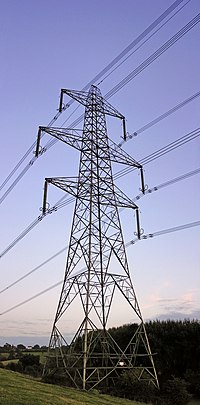
Photo from wikipedia
Abstract Evaluating species responses to anthropogenic infrastructures and other habitat changes is often used to assess environmental impacts and to guide conservation actions. However, such studies are generally carried out… Click to show full abstract
Abstract Evaluating species responses to anthropogenic infrastructures and other habitat changes is often used to assess environmental impacts and to guide conservation actions. However, such studies are generally carried out at the population level, disregarding inter‐individual variability. Here, we investigate population‐ and individual‐level responses toward power lines of a territorial raptor, the Bonelli's eagle Aquila fasciata. We used GPS‐PTT tracking data of 17 adult eagles to model space use as a function of distance to transmission and distribution lines, while accounting for other habitat features known to affect this species. At population level, eagles increased the intensity of space use in the proximity of power lines (up to 1,000 m), suggesting an attraction effect. At individual level, some eagles shared the general population attraction pattern, while others showed reduced intensity of space use in the proximity of power lines. These differential responses were unrelated to the sex of individuals, but were affected by the characteristics of the power grid, with a tendency for apparent attraction to be associated with individuals occupying home ranges with a denser network of transmission lines and transmission pylons. However, the study could not rule out the operation of other potentially influential factors, such as individual idiosyncrasies, the spatial distribution of prey availability, and the availability of natural perches and nesting sites. Overall, these results suggest that power lines may drive different behaviors and have differential impacts across individuals, with those attracted to the proximity of power lines potentially facing increased risk of mortality through electrocution and collision, and those avoiding power lines being potentially subject to exclusion effects. More generally, our results reinforce the need to understand individual variability when assessing and mitigating impacts of anthropogenic infrastructures.
Journal Title: Ecology and Evolution
Year Published: 2022
Link to full text (if available)
Share on Social Media: Sign Up to like & get
recommendations!